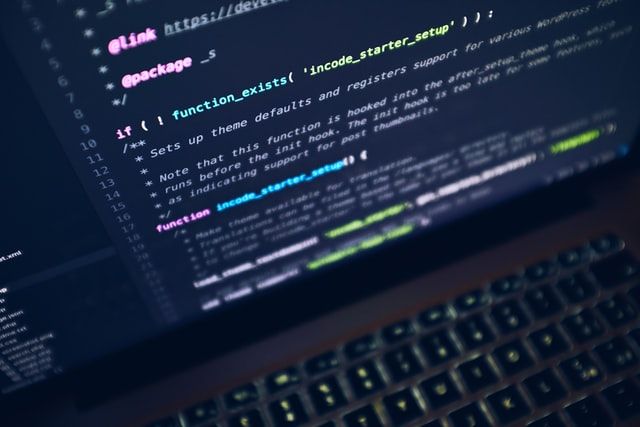Getting Started with Docker

Docker is a virtualization platform used to deliver software in packages called containers. It allows an application to run instances inside of a container. Docker has become very popular nowadays.
Different Versions
Docker is divided into two categories:
Docker-CE is the Community Edition, this one is free to use. If any issue occurs, try to use the community forums and go through the documentation.
Docker-EE is the Enterprise Edition, which is a licensed and premium version of CE.
Installation
- For Ubuntu:
First, update your packages:
sudo apt update
Next, install docker with apt-get:
sudo apt install docker.io
Finally, verify that docker is installed correctly:
sudo docker version
You should see the installation details. It gives you information about the Client and Server version, the Go-lang version, so on and so forth.
If the output of your command is similar to the one below, Congrats!!!!!
Client: Docker Engine - Community
Version: 19.03.5
API version: 1.40
Go version: go1.12.12
Git commit: 633a0ea838
Built: Wed Nov 13 07:25:58 2019
OS/Arch: linux/amd64
Experimental: false
Server: Docker Engine - Community
Engine:
Version: 19.03.5
API version: 1.40 (minimum version 1.12)
Go version: go1.12.12
Git commit: 633a0ea838
Built: Wed Nov 13 07:24:29 2019
OS/Arch: linux/amd64
Experimental: false
containerd:
Version: 1.2.10
GitCommit: b34a5c8af56e510852c35414db4c1f4fa6172339
runc:
Version: 1.0.0-rc8+dev
GitCommit: 3e425f80a8c931f88e6d94a8c831b9d5aa481657
docker-init:
Version: 0.18.0
GitCommit: fec3683
With the basic installation of Docker you’ll need to run the docker command as sudo. However, you can add your user to the docker group, and you’ll be able to run the commands without sudo.
sudo usermod -aG docker ${USER}
su - ${USER}
Running these commands will add your user to the docker group. To verify this, run $ id -nG and if you get back an output with your username in the list rest assured you did everything right.
Creating Your First Docker Image
Now, let's create our first docker image by pulling it from Docker Hub. First let's search the Hub for an image called "hello-world"
docker search hello-world
This will list all the images called "hello-world". From the result, you can see the first image called "hello-world", pull the image and experiment with it.
docker pull hello-world
Result:
Using default tag: latest
latest: Pulling from library/hello-world
0e03bdcc26d7: Pull complete
Digest: sha256:49a1c8800c94df04e9658809b006fd8a686cab8028d33cfba2cc049724254202
Status: Downloaded newer image for hello-world:latest
docker.io/library/hello-world:latest
We just pulled our first docker image from the Docker Hub.
Docker Commands
Now let's get to know some Docker commands;
docker create
Creates a container from an image.
docker create hello-world
Result:
fa622c1b5eec67139c97a0c0db2a0b306012c504ddfdf53eee7b0c143945667a
NOTE: When a container is created, it is given a unique ID.
docker ps
Lists running containers, optional -a flag to list all containers.
docker ps -a
Result:
CONTAINER ID IMAGE COMMAND CREATED STATUS PORTS NAMES
1a203a1e19a2 dockerinaction/hello_world "echo 'hello world'" 12 minutes ago Exited (0) 12 minutes ago distracted_elion
1e752a38edab hello-world "/hello" 26 minutes ago Exited (0) 25 minutes ago reverent_mcclintock
fa622c1b5eec hello-world "/hello" 31 minutes ago Created tender_lichterman
6ff606cb1715 fce289e99eb9 "/hello" 13 days ago Exited (0) 13 days ago sharp_cori
57f793054be9 fce289e99eb9 "/hello" 10 months ago Exited (0) 10 months ago cool_chaplygin
docker start
This command starts any stopped container(s).
docker start fa622
We need the container ID to start the container
docker stop
This command stops any running container(s).
docker stop fa622
docker run
This command creates the container first, and then it starts the container. This command combines the docker create and the docker start command.
docker run ubuntu /bin/echo 'Hello world'
Result:
Unable to find image 'ubuntu:latest' locally
latest: Pulling from library/ubuntu
6b98dfc16071: Pull complete
4001a1209541: Pull complete
6319fc68c576: Pull complete
b24603670dc3: Pull complete
97f170c87c6f: Pull complete
Digest:sha256:5f4bdc3467537cbbe563e80db2c3ec95d548a9145d64453b06939c4592d67b6d
Status: Downloaded newer image for ubuntu:latest
Hello world
docker images
This command lists out all the Docker Images.
docker image ls
REPOSITORY TAG IMAGE ID CREATED SIZE
hello-world latest bf756fb1ae65 6 months ago 13.3kB
hello-world <none> fce289e99eb9 19 months ago 1.84kB
dockerinaction/hello_world latest a1a9a5ed65e9 4 years ago 2.43MB
kitematic/hello-world-nginx latest 03b4557ad7b9 5 years ago 7.91MB
docker container rm
This command deletes container(s).
docker container rm 1a203a1e19a2
NOTE: The containers have to be in a stopped state in order to be deleted.
docker image rm
This command deletes image(s). To remove a docker image, you will need the ID of the image. Use the docker images ls command to get the ID.
docker image rm fce289e99eb9
NOTE: To remove the image, remove the container first.
You can also get help using the command below:
docker --help
Result:
Usage: docker [OPTIONS] COMMAND
A self-sufficient runtime for containers
Options:
--config string Location of client config files (default
"/root/.docker")
-c, --context string Name of the context to use to connect to the
daemon (overrides DOCKER_HOST env var and
default context set with "docker context use")
-D, --debug Enable debug mode
-H, --host list Daemon socket(s) to connect to
-l, --log-level string Set the logging level
("debug"|"info"|"warn"|"error"|"fatal")
(default "info")
--tls Use TLS; implied by --tlsverify
--tlscacert string Trust certs signed only by this CA (default
"/root/.docker/ca.pem")
--tlscert string Path to TLS certificate file (default
"/root/.docker/cert.pem")
--tlskey string Path to TLS key file (default
"/root/.docker/key.pem")
--tlsverify Use TLS and verify the remote
-v, --version Print version information and quit
Management Commands:
builder Manage builds
config Manage Docker configs
container Manage containers
context Manage contexts
engine Manage the docker engine
image Manage images
network Manage networks
node Manage Swarm nodes
plugin Manage plugins
secret Manage Docker secrets
service Manage services
stack Manage Docker stacks
swarm Manage Swarm
system Manage Docker
trust Manage trust on Docker images
volume Manage volumes
Commands:
attach Attach local standard input, output, and error streams to a running container
build Build an image from a Dockerfile
commit Create a new image from a container's changes
cp Copy files/folders between a container and the local filesystem
create Create a new container
diff Inspect changes to files or directories on a container's filesystem
events Get real time events from the server
exec Run a command in a running container
export Export a container's filesystem as a tar archive
history Show the history of an image
images List images
import Import the contents from a tarball to create a filesystem image
info Display system-wide information
inspect Return low-level information on Docker objects
kill Kill one or more running containers
load Load an image from a tar archive or STDIN
login Log in to a Docker registry
logout Log out from a Docker registry
logs Fetch the logs of a container
pause Pause all processes within one or more containers
port List port mappings or a specific mapping for the container
ps List containers
pull Pull an image or a repository from a registry
push Push an image or a repository to a registry
rename Rename a container
restart Restart one or more containers
rm Remove one or more containers
rmi Remove one or more images
run Run a command in a new container
save Save one or more images to a tar archive (streamed to STDOUT by default)
search Search the Docker Hub for images
start Start one or more stopped containers
stats Display a live stream of container(s) resource usage statistics
stop Stop one or more running containers
tag Create a tag TARGET_IMAGE that refers to SOURCE_IMAGE
top Display the running processes of a container
unpause Unpause all processes within one or more containers
update Update configuration of one or more containers
version Show the Docker version information
wait Block until one or more containers stop, then print their exit codes
Run 'docker COMMAND --help' for more information on a command.
Writing Your First Dockerfile
Dockerfile is the text file that will contain the directives on how to build your docker image. Below are some Dockerfile instructions that you should know:
- FROM — set the base image
- RUN — execute a command in the container
- COPY — supports the basic copying of local files into the container
- ENV — set environment variable
- WORKDIR — set the working directory
- ENTRYPOINT — set the image’s main command, allowing that image to be run as though it was that command
- VOLUME — create mount-point for a volume
- CMD — set executable for container
For example, let's see what a Dockerfile for a Go application could look like:
FROM golang:1.11-alpine
WORKDIR /go/src/app
COPY . .
RUN go get -d -v ./...
RUN go install -v ./...
CMD ["app"]
Be sure to always indicate a specific version of the base image you would like to use because you never know when the ‘Latest’ image will be changed.
You can then build and run the Docker image:
docker build -t my-golang-app
This command will create an image tagged my-goland-app from your Dockerfile
docker run -it --name my-running-app my-golang-app
With this, the container/image is production ready.
Conclusion
Docker is a strong tool for creating and running applications both locally and in production. Numerous CI/CD tools like Jenkins, TravisCI, CircleCI, etc. are now fully supported and integrated with Docker, which makes your changes from environment to environment very easy. This tutorial has just scratched the basic part of the Docker world. Below are some a few resources to help get you out.
Resources
Getting Started With Docker In Linux
Play with Docker, this is an online playground for Docker. It will allow you to practice any of the Docker commands we went over, without having to install anything onto your machine. The best part is it’s free and easy to use.













